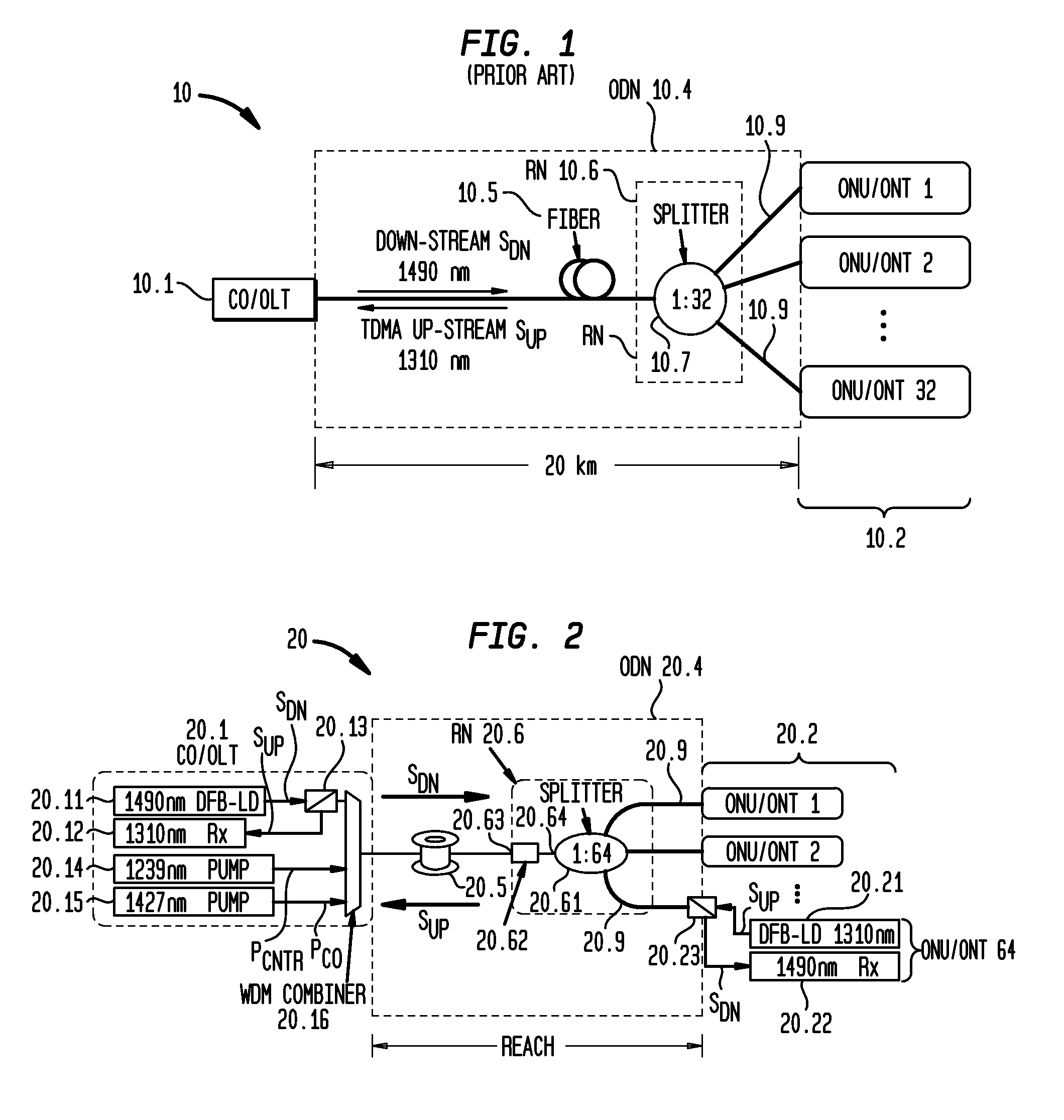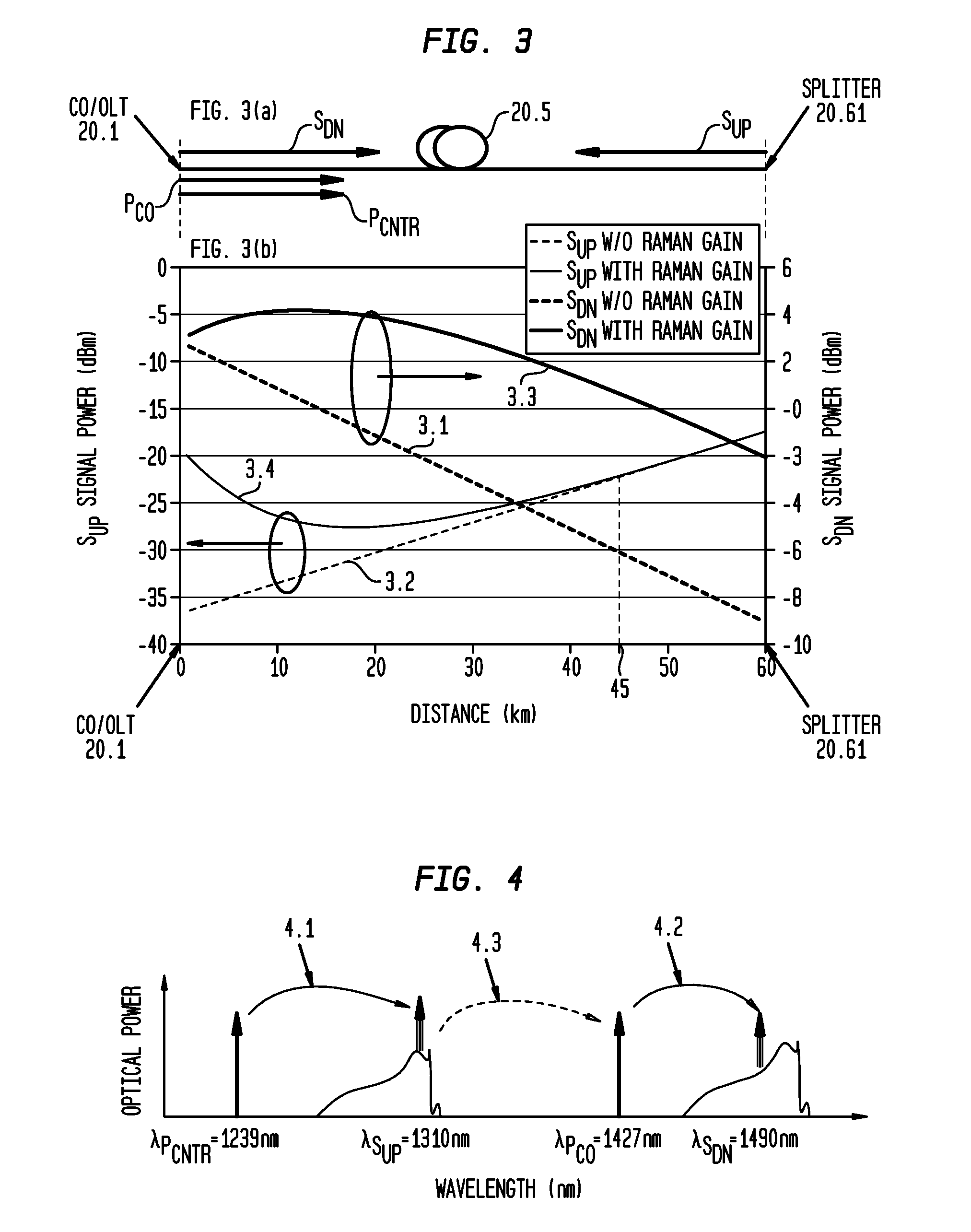Method and apparatus using distributed raman amplification and remote pumping in bidirectional optical communication networks
a technology of optical communication network and distributed raman, which is applied in the field of optical fiber communication network, can solve the problems of limiting the maximum transmission distance (or reach) between the olt and the farthest onu/ont, limiting the typical gpon deployment to a 1:32 split ratio and km reach, negating some of the advantages of pon systems, etc., to achieve the effect of improving the loss budget, extending the reach, and increasing the split ratio
- Summary
- Abstract
- Description
- Claims
- Application Information
AI Technical Summary
Benefits of technology
Problems solved by technology
Method used
Image
Examples
example
[0076]This example demonstrates a reach-extended, remotely-pumped, distributed Raman gain GPON, which provided symmetric 2.488 Gb / s transmission over 60 km of fiber. The network was compatible with ITU G.984. Various materials, dimensions and operating conditions are described by way of illustration only and, unless otherwise expressly stated, are not intended to limit the scope of the invention.
[0077]FIG. 2 is a schematic diagram of the experimental apparatus, showing a CO / OLT 20.1 optically coupled to a RN 20.6 by means of 60 km of Zero Water Peak AllWave® single-mode optical fiber 20.5 and a multiplicity of ONU / ONTs 20.2. The OLT comprised (i) a transmitter 20.11 including a DFB LD for generating a downstream optical signal at 1490 nm, (ii) a receiver 20.12 including an APD for detecting upstream optical signals at 1310 nm, (iii) a WDM combiner 20.16, and (iv) Raman pump sources 20.14 and 20.15 that provided remote pumping of distributed Raman gain in fiber 20.5. In particular, p...
PUM
 Login to View More
Login to View More Abstract
Description
Claims
Application Information
 Login to View More
Login to View More - R&D
- Intellectual Property
- Life Sciences
- Materials
- Tech Scout
- Unparalleled Data Quality
- Higher Quality Content
- 60% Fewer Hallucinations
Browse by: Latest US Patents, China's latest patents, Technical Efficacy Thesaurus, Application Domain, Technology Topic, Popular Technical Reports.
© 2025 PatSnap. All rights reserved.Legal|Privacy policy|Modern Slavery Act Transparency Statement|Sitemap|About US| Contact US: help@patsnap.com



